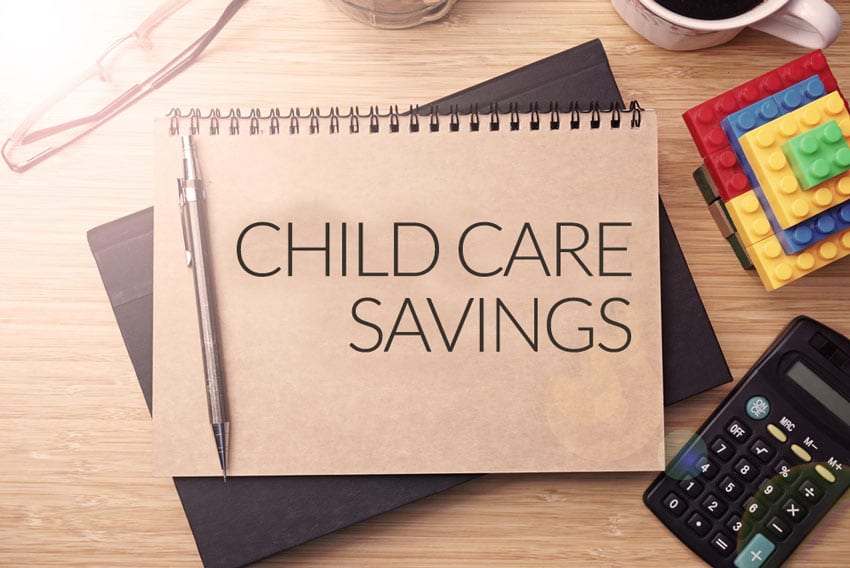Sara Greenwood works at a bank. Her husband travels frequently for his job. Their parents live in different states. The couple has two boys, ages 2 and 4. So how do things work on the weekdays?
How else?
The kids are in childcare, much to the chagrin and deep guilt of their mother.
“I’m sure it’s a typical American story, but sometimes you feel like you’re going back and forth to work to make money so you can pay someone else to raise your kids,” Greenwood said.
Average Cost of Childcare in 2015
And “pay” is the key word there. According to a report by the think tank New America, the average cost of full-time day care for kids up to the age of 4 reached $9,589 a year in 2015, topping the average cost of in-state college tuition ($9,410).
Every week in America, childcare providers care for more than 11 million children ages 5 or younger whose parents are working. The rising cost of childcare — which has outpaced inflation — adds to the complications.
According to data from the Department of Labor, the overall Consumer Price Index increased about 12% from 2009 through 2016, in a seven-year period following the Great Recession. But the childcare cost index — covering day care and nursery school — jumped more than 21%.
In a 2016 Cost of Care survey by Care.com, more than half of families said they spend more than 10% of their household budget on childcare. Meanwhile, about 20% said they spend a quarter of their income or more.
It adds up to great concern for Americans who are already stretching the family budget.
“The world has changed,” said Kenneth Hart, a career educator who has served as a high school principal in New Jersey and Florida. “The single biggest family dynamic that changed is when moms had to go to work. It was for economic reasons and we’re not going back to the way it used to be, but several generations of kids often came home to nothing.
“When the children are younger, parents are forced to make tough choices. Well, actually there’s no choice because the children must be cared for. And you want them in the best possible situation. That costs money. These days, lots of money.”
Arizona State University researcher Chris Herbst wrote a 2011 paper that said the claims of rising childcare costs were greatly overstated. His thesis: The percentage of families needing childcare has not increased, but pay for childcare workers has become flat and even decreased in some instances.
But more recent financial data has confirmed that something is happening to cause a steep increase in prices. Herbst said he now believes it’s a reflection of high-end options that have flooded the market.
Higher-End Childcare is Driving up the Cost
Montessori and Primrose schools, for example, have widened their place in the childcare market, sometimes establishing their presence in communities with higher-priced homes. So accordingly, the tuition is adjusted to reflect the community.
According to a Care.com survey, families are willing to pay more for high-quality care and specialized amenities, such as yoga, video camera check-in capability and increased technology. Also, families pay more to nannies, babysitters and au pairs if the nannies offer value-added qualities, such as teaching another language to the children, having a CPR/First Aid certification or cooking organic meals.
The scramble to find the right childcare provider also extracts another price from families. According to the survey, 67% of working parents said that childcare costs have influenced their career decisions, while 43% said they feel they have to work harder to make more money to cover childcare costs. Meanwhile, 74% said they believe their jobs were impacted because childcare plans fell through, whether it resulted in having to use a sick day, falling behind on work or losing a day’s pay.
Low wages and high childcare costs lead some parents to conclude that they can afford to be a stay-at-home parent, as the alternative is costlier.
Childcare might be highly personal, but it’s also a consumer enterprise. Accordingly, an educated and prudent consumer can maximize their childcare spending.
Ways to Save on Childcare
If you’re looking for ways to cut your expenses, consider the following.
Flexible Spending Account
It’s offered by many employers and can significantly reduce your tax liability. The account can set aside up to $2,500 (or $5,000 for married couples filing jointly and a single head of household) per year in pre-tax income to pay for childcare expenses, thus reducing your taxable income.
Tax Break: Child and Dependent Care Tax Credit
If there’s not an available FSA, take the Child and Dependent Care Tax Credit, which will provide tax-filing savings if you spend more than $5,000 in annual childcare expenses.
Location
It might seem like common sense, but estimate the travel time to and from the care facility. If it’s a bit more expensive but closer to your home, it still might be better than a less expensive place that’s further away.
Discounts
Contact your human resources department. Companies that don’t have on-site childcare might have employee deals at nearby facilities.
Explore Your Options
Home-based or ministry childcare facilities could be more affordable, but it’s important to check for independent accreditation. Even though there’s less stringent state licensing requirements, you should know if those facilities meet all the right standards (cleanliness, caregiver interaction and more).
Childcare Options for Single Parents
Single moms and dads are in the precarious position of needing more childcare coverage with fewer financial resources. Research online to see if your city or state offers subsidized childcare based on your income. Also, look into income-based childcare programs available at churches and nonprofits. Learn more about financial help for single moms and dads.
Flex Scheduling
Perhaps your employer will work with your schedule or even allow you to occasionally work at home. If you need fewer hours of childcare, it’s financial savings, even though a disjointed schedule could be exhausting. Weigh those options.
Use Your Skills
Smaller childcare facilities might be willing to waive their costs in exchange for your expertise in bookkeeping, marketing or tax preparation. How about some old-fashioned bartering?
Get Creative
Form a childcare cooperative with friends and neighbors. That works especially well for part-time workers. While one works, the other watches the kids. By taking turns, the kids get built-in playmates and everyone receives free childcare. Win-win.

5 MINUTE READ
Home » InCharge Blog »
Sources:
- Bugbee, K., (2016), How Much Does Child Care Cost? Retrieved from: https://www.care.com/c/stories/2423/how-much-does-child-care-cost/
- Sahadi, J., (2016, 28 September), Child Care Now Costs More Than In-State College Tuition. Retrieved from: http://money.cnn.com/2016/09/28/pf/child-care-costs/
- Bahney, A. (2015, 29 June), Child Care Is Biggest Expense For Growing Number of Families. Retrieved from: http://www.forbes.com/sites/annabahney/2015/06/29/child-care-is-biggest-expense-for-a-growing-number-of-families/#6b9dbd746a85
- Greenfield, R., (2016), Why Is Child Care Getting More Expensive? Retrieved from: http://www.bloomberg.com/news/articles/2016-07-18/why-is-childcare-getting-even-more-expensive
- NA, (2015), The New America Care Report. Retrieved from: https://www.newamerica.org/in-depth/care-report/

















